2017 April 7
Rick and Sonia Lambert report a sighting of a Western Spring Azure in Sooke on April 5 – the first Invert Alert has heard of this year.
2017 April 7
Rick and Sonia Lambert report a sighting of a Western Spring Azure in Sooke on April 5 – the first Invert Alert has heard of this year.
2017 April 6
Jeremy Tatum writes: I photographed the spider below on the outside wall of my apartment building this morning.
Robb Bennett writes: It’s an immature male Clubiona. There are 17 species recorded in the province, several of which are common in the Victoria area, and they all look like your specimen. Commonly known as sac spiders, larger specimens have been known to bite, causing some minor localized pain and swelling. In fact, at the first spider presentation I made here in Victoria a decade or so ago (for the VNHS), a youngster who had brought in a live specimen for the “show and tell” part was bitten by it. It escaped from the lad’s container and got into his shirt and nipped him on the stomach. The lad seemed unconcerned and actually got some good mileage out of showing other members of the audience the small welt on his belly.
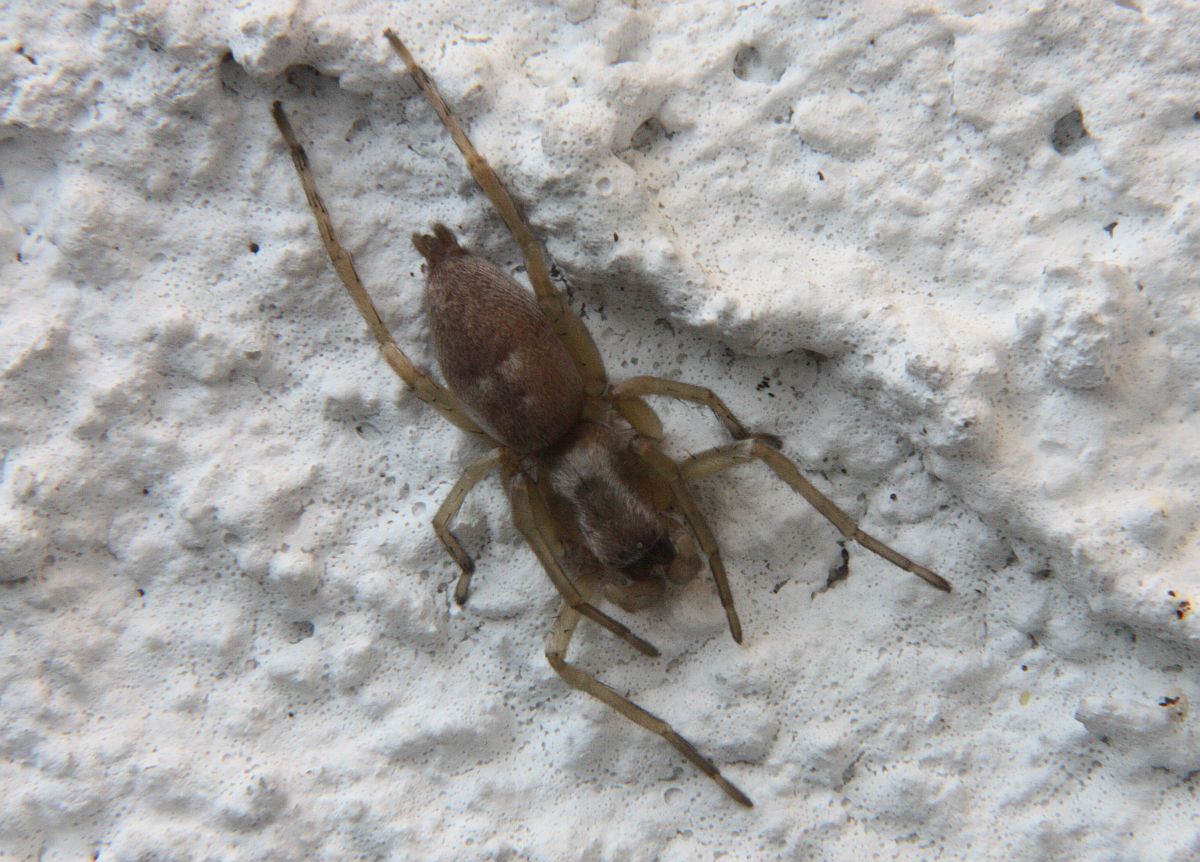
 Sac spider Clubiona sp. (Ara.: Clubionidae) Jeremy Tatum
Sac spider Clubiona sp. (Ara.: Clubionidae) Jeremy Tatum
2017 April 4
I spotted an entry on the bcvibirds birdy site saying that Ian Cruickshank had seen a Moss’s Elfin at East Sooke on April 1.
Ron Flower writes: Nora and I went out to Jordan River yesterday and on the way home we stopped at Muir Creek where we got our first butterfly of the year – a rather sad looking Red Admiral. We were sitting on a log at the river mouth about three-ish and it landed right in front of us.
Annie Pang saw her first Cabbage White of the year. She writes: Cool to finally see a butterfly! [We can all relate to that this year.] Annie also photographed two bees. Thanks to Cory Sheffield for identification.

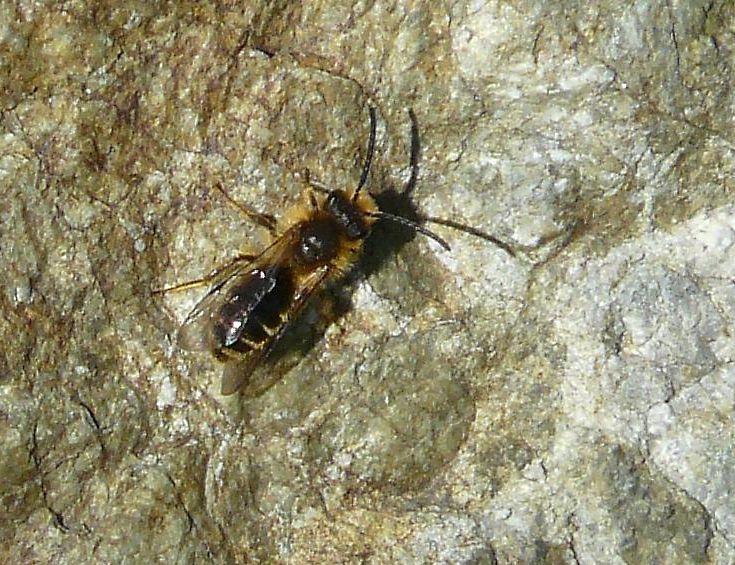
Male mining bee Andrena sp. (Hym.: Andrenidae) Annie Pang
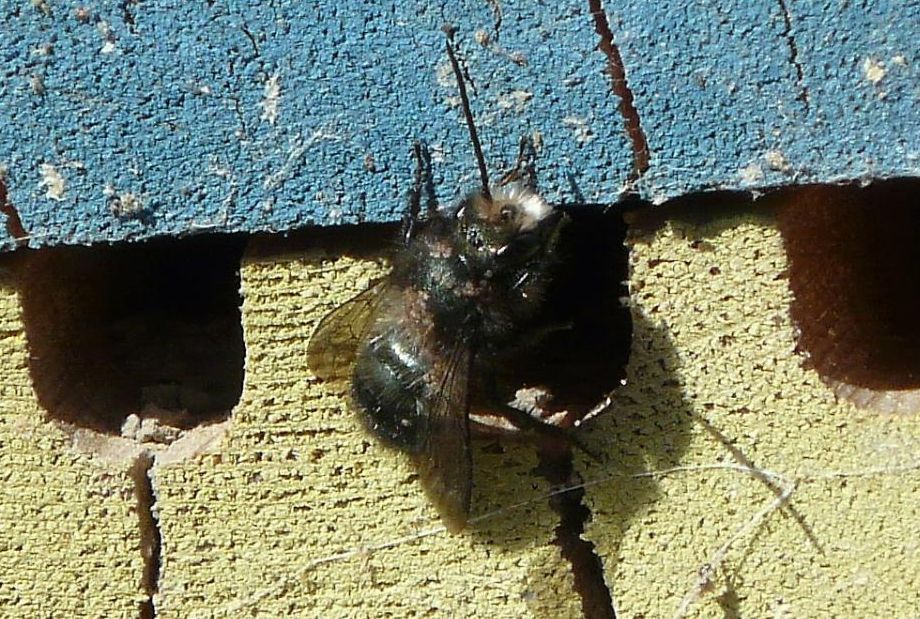
 Male mason bee Osmia sp. (probably O. lignaria) (Hym.: Megachilidae) Annie Pang
Male mason bee Osmia sp. (probably O. lignaria) (Hym.: Megachilidae) Annie Pang
Some musings (by Jeremy Tatum) on the spelling of Sara Orangetip. Orangetip, Orange-tip, Orange-Tip and Orange Tip are all seen. If any principle is to be called upon, I suppose that it would make sense to try to be consistent with other butterfly names. I think we always spell Swallowtail thus, not Swallow-tail or Swallow-Tail or Swallow Tail. Consistency of spelling, then, would seem to suggest Orangetip, Duskywing, etc.
As for Sara versus Sara’s, Edith versus Edith’s or Editha. Well, Milbert’s Tortoiseshell is named, I think, in honour of Mr Milbert. (Actually, I think, M. Jacques-Gérard Milbert, so we’d better start to pronounce it Meelberre.) But no one seems to know who Sara or Edith were. For the English name of Anthocharis sara, we should just be guided by what we do for Speyeria hydaspe amd Speyeria zerene, and just repeat the specific name. Thus the Sara Orangetip, consistent with the Hydaspe Fritillary. It would be different if we knew who, if anyone, Sara was. Also, I don’t know what “sara” means, if anything, in Latin. Scientific names don’t have to be Latin – although they are usually made to look like Latin, and to follow Latin grammar. If the butterfly were named after someone called Sara, the Latin for “Sara’s” would be Sarae, and the scientific name would have been given as sarae.
Of course if the argument that I have just given for Anthocharis sara is extended to Euphydryas editha, and there is no real Edith, we should have to refer to the Editha Checkerspot, though I doubt if this would take on.
2017 April 3
Charlene Wood, who joined yesterday’s Butterfly Walk, gives us more details and photographs of the ciid (sic!) beetle that she found yesterday, as well as identifying for us two of Ian Cruickshank’s recent invertebrates. One of these was the beetle Necrophilus hydrophiloides (for details scroll to March 3), and the other was a most unusual creature known as a Bristly Millipede (for details scroll to March 18).
Charlene writes, of the beetle she found yesterday,: The beetle I collected yesterday from Turkey Tail fungus (Trametes versicolor) during our walk along Lochside trail/Blenkinsop Lake is a "Minute Tree Fungus Beetle" Cis sp. (Family Ciidae). If I find time to run further through keys I’ll update you with a species-level ID. Both adults and larvae obligately live in and feed on the persistent fruiting bodies of wood-rotting polypores or bracket fungi.

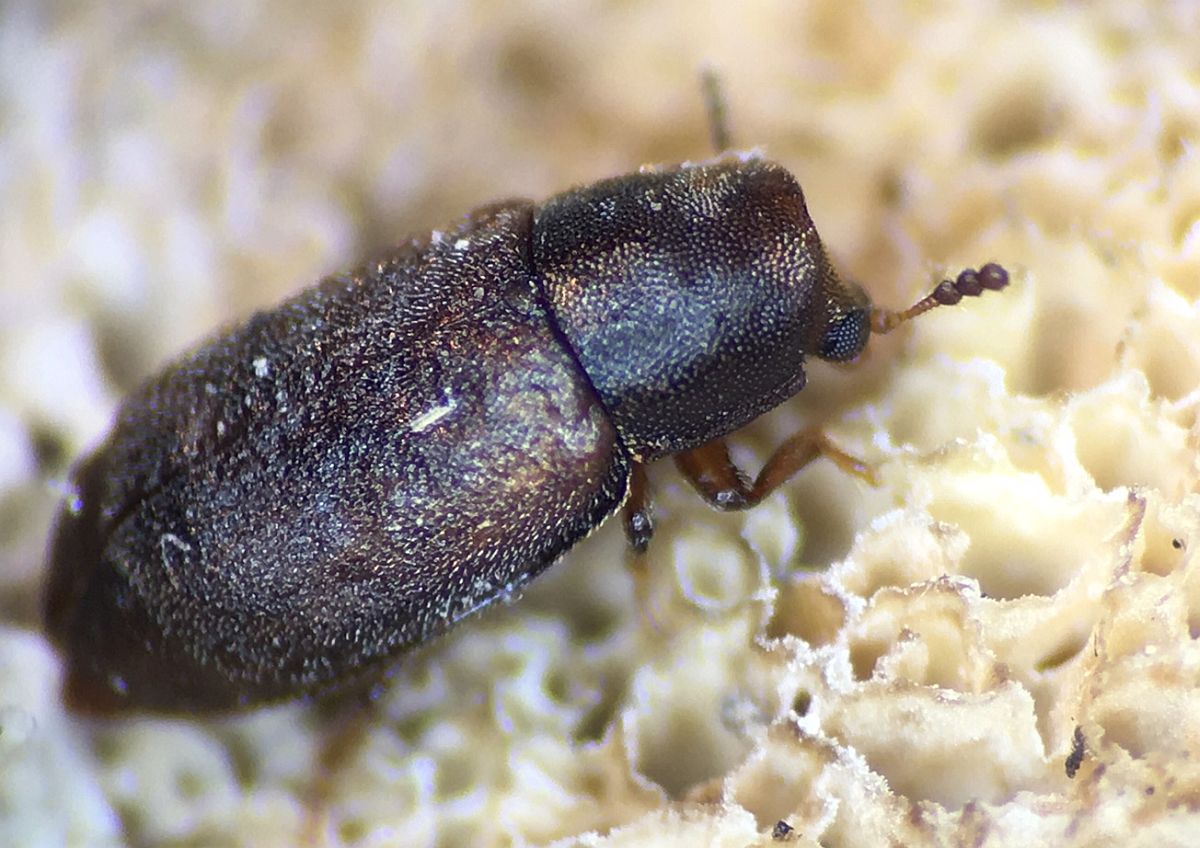
Cis sp. (Col.: Ciidae) Charlene Wood
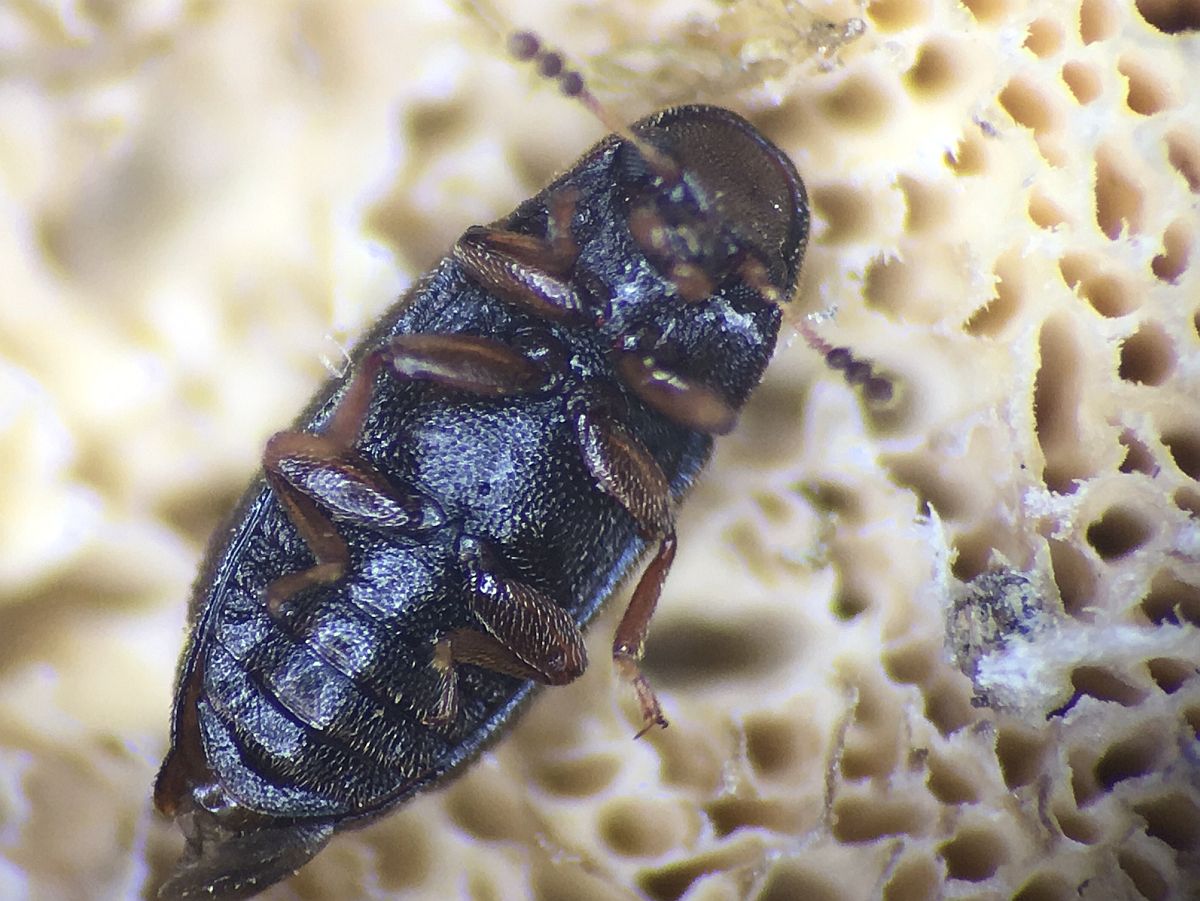
 Cis sp. (Col.: Ciidae) Charlene Wood
Cis sp. (Col.: Ciidae) Charlene Wood
Steven Roias sends a picture of a small moth from his back deck in Saanich. Jeremy Tatum writes: Pending a more expert opinion, I’m tentatively labelling this one Chionodes mediofuscella.
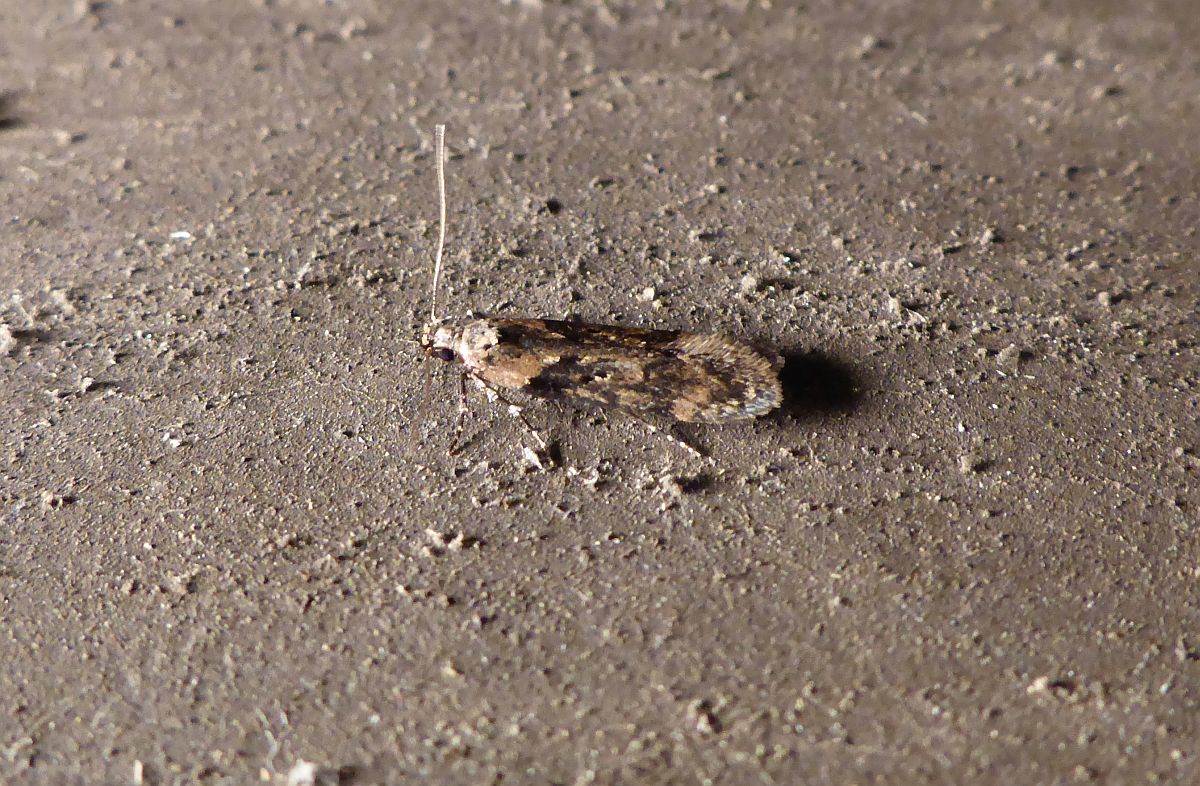
 Probably Chionodes mediofuscella (Lep.: Gelechiidae) Steven Roias
Probably Chionodes mediofuscella (Lep.: Gelechiidae) Steven Roias
2017 April 2
Gerry and Wendy Ansell write: We got our first butterflies of the year yesterday (April 1). There were two Moss’s Elfins on the Galloping Goose trail at Roche Cove Regional park in a sunny spot without wind.
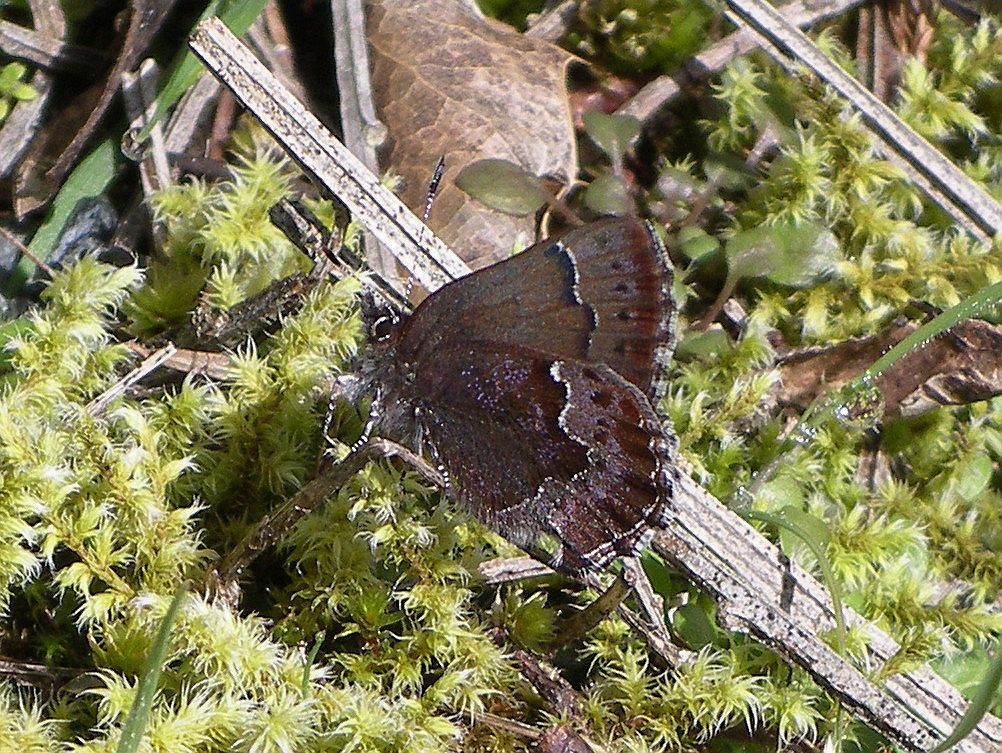
 Incisalia mossii (Lep.: Lycaenidae) Wendy Ansell
Incisalia mossii (Lep.: Lycaenidae) Wendy Ansell
Jeremy Tatum writes: I, too, saw my first butterfly of the year yesterday, albeit a modest Cabbage White, at South Valley Drive. (Guess what I was doing there.) And Annie Pang photographed a Honey Bee at Gorge Park Community Gardens. Although the season has had a very late start, all this augurs well for the first Butterfly Walk of the season this afternoon. For details, see the March 30 posting, but, in brief, meet at the top of Mount Tolmie at 1:00 pm today. All welcome, and I expect we’ll see a few first-of-the-seasons.
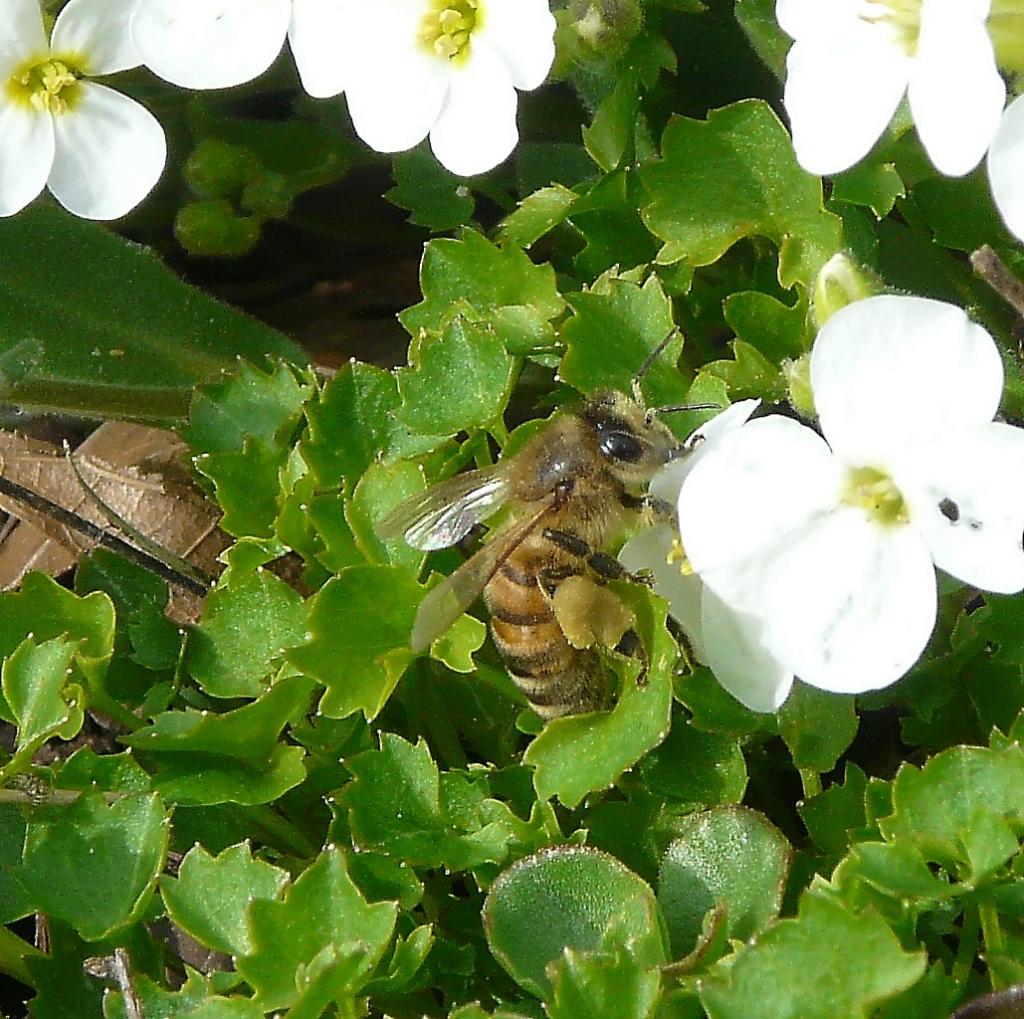
 Honey Bee Apis mellifera (Hym.: Apidae) Annie Pang
Honey Bee Apis mellifera (Hym.: Apidae) Annie Pang
Jeremy Tatum writes: At Munn Road yesterday I saw an Epirrhoe plebeculata (a day-flying geometrid moth), but, strangely, no Mesoleuca gratulata. I very much want to know what is the larval foodplant of E. plebeculata. It is usually listed as Galium, which is the foodplant of other Epirrhoe species, but I suspect plebeculata prefers something else. So keep a look-out, all, to see if you can spot this moth ovipositing!
Added later:
Seven brave souls met to do the first of this year’s Butterfly Walks. We walked along the Lochside Trail from Borden Road to almost Lohbrunners, but alas, the sunny start to the morning did not last. The afternoon was largely cloudy, with the Sun hiding frustratingly close to the edge of a large cloud, and it was just a little bit too cool, cloudy and breezy; no butterflies turned up. It was nevertheless a very enjoyable afternoon, with three newcomers and four regulars, all great enthusiasts. Although there were no butterflies, we found three young caterpillars of the noctuid moth Aseptis adnixa, on Oemleria cerasiformis, and a beetle expert with us showed us a ciid beetle. Not all scientific names are long and unpronounceable, and my computer can do all the red-underlining it likes, but that’s what it was, a beetle of the Family Ciidae. The beetle was just as small as its Family name.